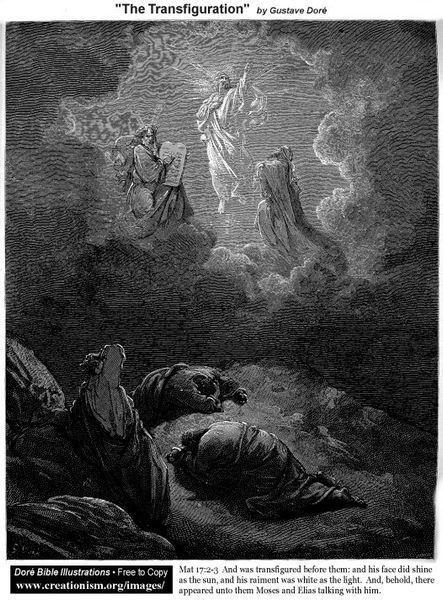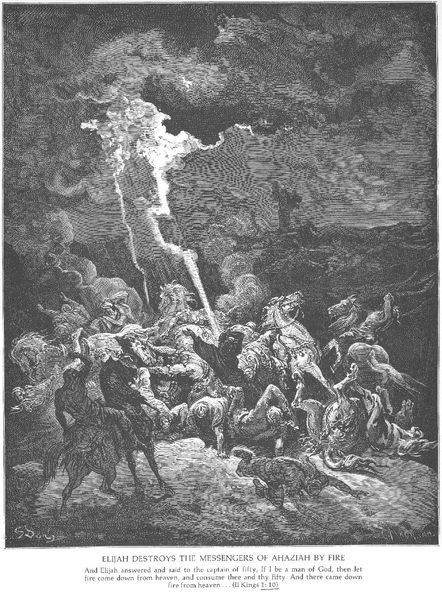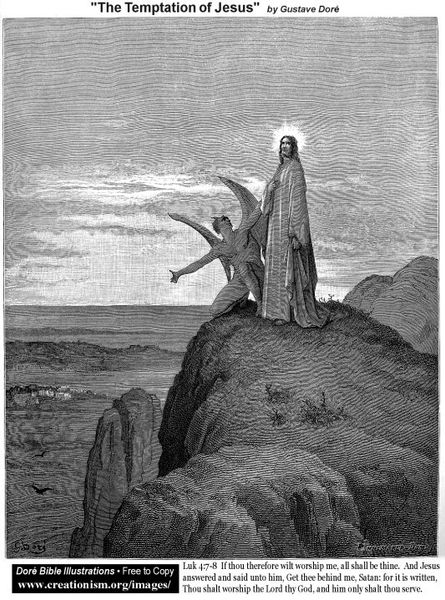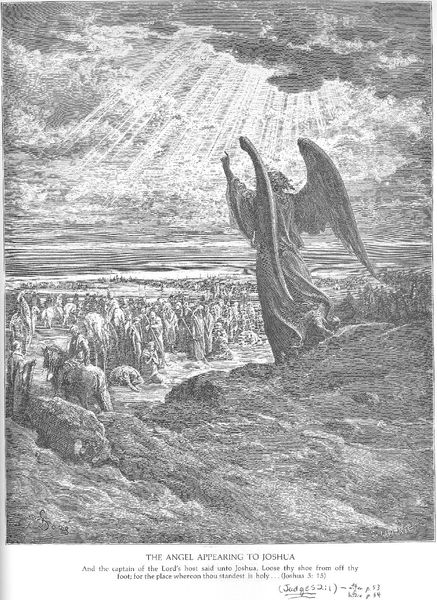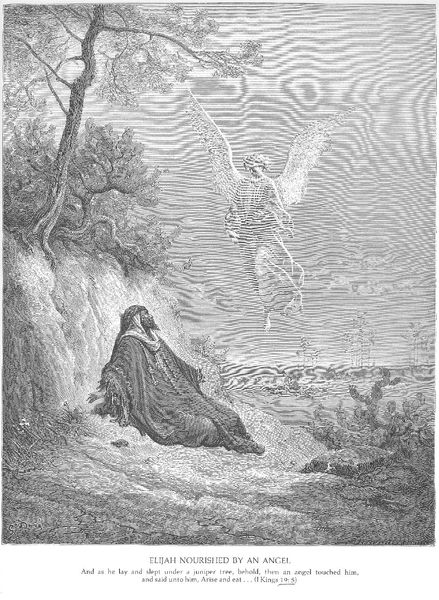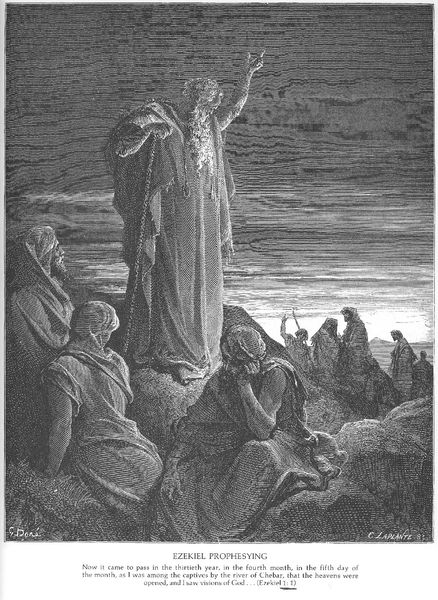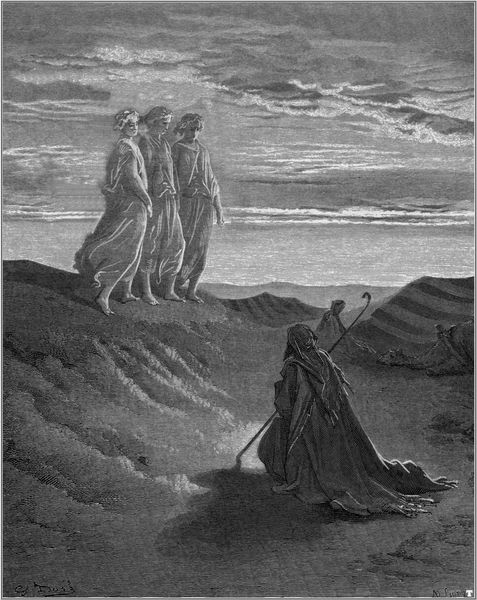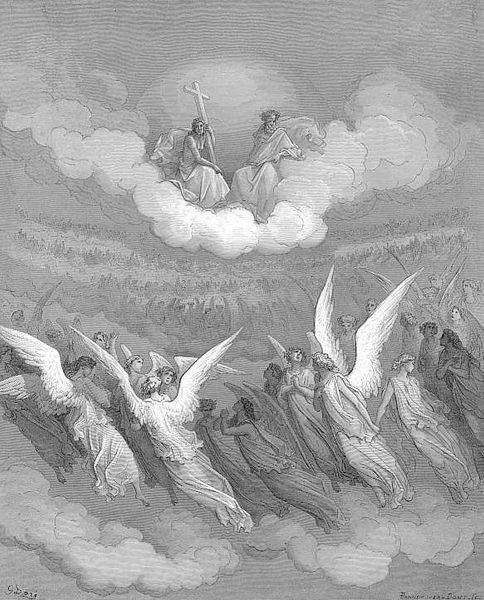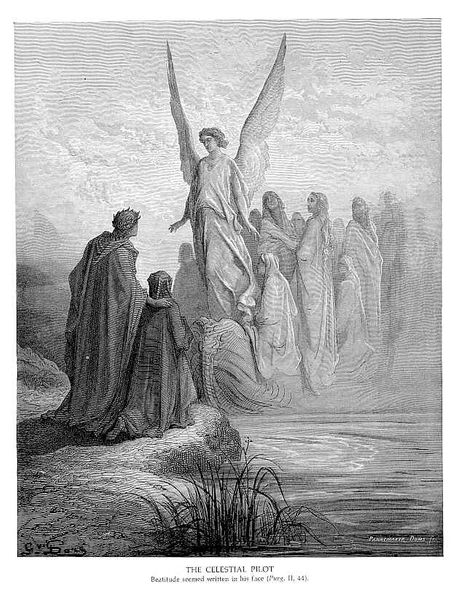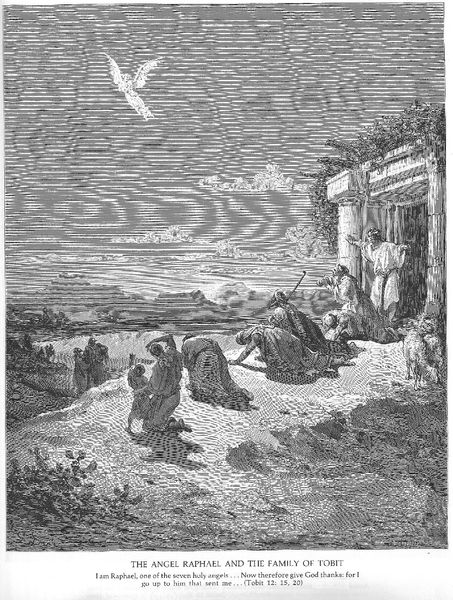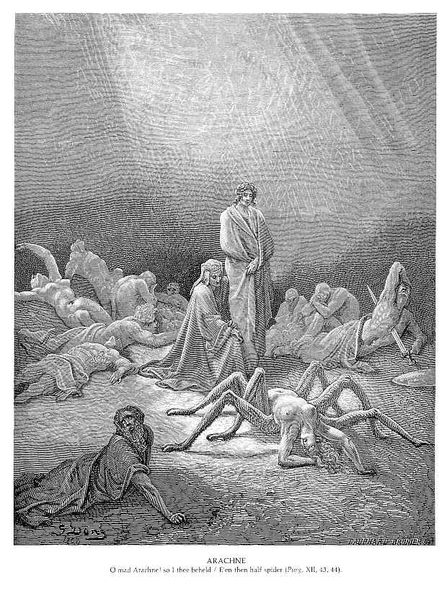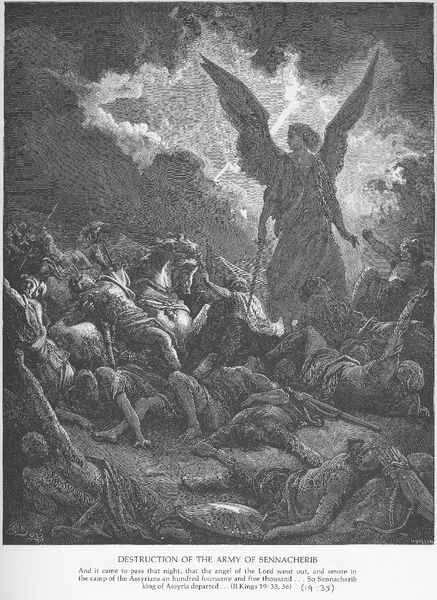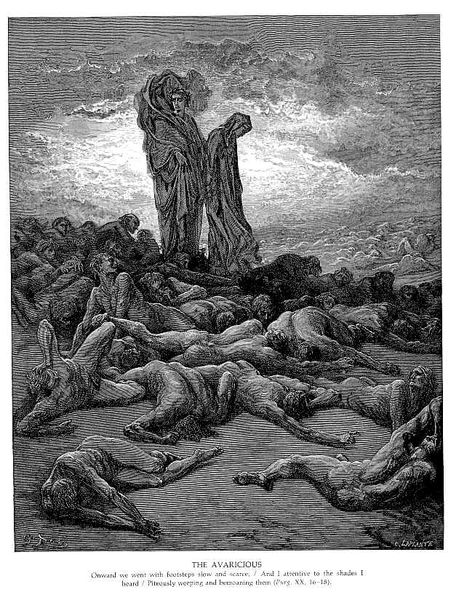
drawing, print, photography, engraving
#
drawing
#
narrative-art
# print
#
figuration
#
photography
#
jesus-christ
#
romanticism
#
christianity
#
line
#
symbolism
#
history-painting
#
engraving
#
christ
Copyright: Public domain
Curator: Today, we're observing an engraving titled "The Ascension" by Gustave Doré. Editor: Well, the immediate impression is one of stark contrast – a blinding ethereal figure ascends against a dramatically shadowed earthly scene. There's a very clear, almost diagrammatic opposition at play. Curator: Indeed. Doré was a master of using line and shadow to create dramatic and emotionally charged scenes. The sharp contrasts heighten the spiritual drama. Semiotically, we could say the lightness represents transcendence, the darkness, earthly confinement. Editor: I see your point. Historically, this depiction reinforces the church’s visual language – using light as a symbolic cue for divine power. It's not merely a representation; it's a piece of ideological machinery in visual form. Consider also the Romantic style, imbuing it with drama that appeals to feeling and faith. Curator: Precisely. And let’s examine the formal arrangement. Doré's composition pulls the viewer’s eye upwards following the figure’s path – creating a vertical emphasis and dynamism, even though it’s static image. Editor: It also strategically uses the reactions of the apostles to generate faith in the audience, it makes this pivotal religious event tangible and real, something witnessed. What this print is showing is just as crucial as what it signifies. Curator: Yes, Doré places these observers within our field of vision, so the viewer is essentially co-witnessing with them, thus activating an implicit sense of communal faith. A fascinating exploration of how visual rhetoric translates into shared experiences of faith. Editor: Ultimately, this piece shows the powerful capacity of prints to shape narratives and perpetuate certain readings of spiritual stories in 19th century cultural mindset, as a product distributed to the masses, an important element to consider when assessing its role. Curator: A keen observation – demonstrating how close visual and historical examinations complement one another for deeper insight into this engraving's complexity.
Comments
No comments
Be the first to comment and join the conversation on the ultimate creative platform.
